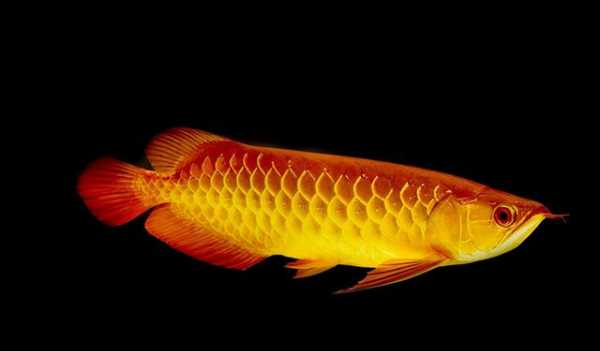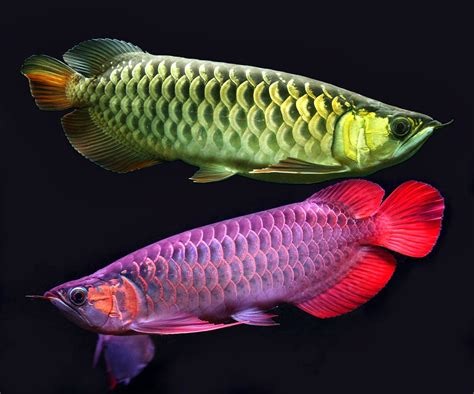Arowana Color Genetics: Unlock Vibrant Hues
Arowana Color Genetics: Unlock Vibrant Hues
Did you know that some Arowana Genetics can sell for over $300,000 due to their unique coloration? This astounding fact highlights the incredible value placed on these fish and their vibrant hues. But what if you could understand and even influence the color genetics of arowana? How would that change the way we breed and appreciate these magnificent creatures?
The Fascinating World of Arowana Color Genetics
Arowana, also known as dragon fish, are prized for their striking appearance and vibrant colors. These ancient fish have captured the hearts of aquarium enthusiasts and collectors worldwide. Their color variations range from silvery scales to brilliant reds, golds, and even platinum hues.

The Genetic Palette: Understanding Arowana Color Inheritance
Color genetics in arowana is a complex and fascinating field. It involves the interplay of various genes that determine the fish’s pigmentation, scale pattern, and overall appearance. Understanding these genetic mechanisms is crucial for breeders and enthusiasts who aim to produce specific color varieties.
Key Genetic Factors Influencing Arowana Colors:
- Pigment genes: Control the production of various pigments
- Pattern genes: Determine the distribution of colors across the fish’s body
- Structural genes: Affect the physical properties of scales, influencing light reflection
- Modifier genes: Fine-tune the expression of other color-related genes
Key Takeaway: Arowana color is determined by a complex interplay of multiple genetic factors, not just a single gene.

The Rainbow Spectrum: Popular Arowana Color Varieties
Arowana come in a stunning array of colors, each with its unique appeal and value. Let’s explore some of the most sought-after varieties:
- Gold Arowana: Known for their brilliant metallic sheen
- Red Arowana: Prized for their deep, rich red coloration
- Silver Arowana: The most common variety, with a sleek, silvery appearance
- Green Arowana: Featuring a range of green hues, from olive to emerald
- Blue Base Arowana: Rare variety with a distinctive blue undertone
- Platinum Arowana: Extremely rare and valuable, with a pearlescent white color
Quick Fact: The rarest arowana color varieties can fetch prices upwards of $400,000 in the collector’s market.
Table: Comparison of Popular Arowana Color Varieties
| Color Variety | Rarity | Price Range | Notable Characteristics |
|---|---|---|---|
| Gold | Common | $1,000 – $5,000 | Metallic golden scales |
| Red | Rare | $10,000 – $50,000 | Deep red coloration |
| Silver | Very Common | $100 – $500 | Silvery scales with a green tint |
| Green | Common | $1,000 – $3,000 | Various green hues |
| Blue Base | Very Rare | $50,000 – $100,000 | Unique blue undertones |
| Platinum | Extremely Rare | $100,000 – $400,000+ | Pearlescent white coloration |
Key Takeaway: The rarity and unique characteristics of each color variety significantly impact their market value.
Unraveling the Genetic Code: How Arowana Colors Are Inherited
Understanding the inheritance patterns of arowana colors is crucial for successful breeding programs. The process involves complex genetic mechanisms that determine how colors are passed from parents to offspring.

Dominant and Recessive Genes in Arowana Color Inheritance
Color genetics in arowana often involves dominant and recessive genes. This means that some color traits can be masked by more dominant ones, only to reappear in future generations.
Examples of Genetic Inheritance in Arowana:
- Gold coloration: Often exhibits incomplete dominance
- Red pigmentation: Typically involves multiple genes working together
- Green base color: Can be influenced by both dominant and recessive genes
- Blue undertones: Often result from specific combinations of recessive genes
Key Takeaway: Breeding for specific arowana colors requires a deep understanding of genetic inheritance patterns and careful selection of parent fish.
The Science of Selective Breeding: Enhancing Arowana Colors
Selective breeding is a powerful tool used by arowana breeders to enhance desirable color traits and create new varieties. This process involves carefully choosing parent fish with specific color characteristics and breeding them over multiple generations.
Steps in Selective Breeding for Arowana Colors:
- Identify desired color traits
- Select parent fish with those traits
- Breed selected parents and evaluate offspring
- Choose the best offspring for further breeding
- Repeat the process over multiple generations
- Stabilize the new color variety through careful linebreeding
Quick Fact: It can take several generations of selective breeding to establish a new, stable arowana color variety.
Environmental Factors: Nurturing Vibrant Hues
While genetics play a crucial role in determining arowana colors, environmental factors can significantly influence the expression of these genetic traits. Providing optimal conditions is essential for helping arowana reach their full color potential.
Key Environmental Factors Affecting Arowana Colors:
- Water quality: Clean, well-maintained water enhances color vibrancy
- Diet: A balanced diet rich in carotenoids can intensify red and gold hues
- Lighting: Proper lighting can bring out the best in arowana colors
- Stress levels: Minimizing stress helps maintain optimal coloration
- Tank size: Adequate space allows for proper growth and color development
Key Takeaway: Optimal environmental conditions are crucial for arowana to develop and maintain their vibrant colors.
The Role of Nutrition in Enhancing Arowana Colors
A well-balanced diet is crucial for maintaining and enhancing the vibrant colors of arowana. Specific nutrients can have a direct impact on pigmentation and overall health, which in turn affects color intensity.
Essential Nutrients for Vibrant Arowana Colors:
- Carotenoids: Enhance red, orange, and yellow pigments
- Spirulina: Boosts overall color intensity and health
- Vitamin A: Supports healthy skin and scale development
- Omega-3 fatty acids: Promote overall health and color vibrancy
- Minerals: Such as zinc and iron, which support pigment production
Quick Fact: Some breeders use color-enhancing foods to intensify the hues of their arowana, especially before shows or sales.
Genetic Mutations: The Wild Card in Arowana Color Genetics
Genetic mutations can lead to unexpected and sometimes highly prized color variations in arowana. These spontaneous changes in DNA can result in entirely new color patterns or intensities.
Notable Arowana Color Mutations:
- Albino arowana: Lack of pigmentation resulting in white or pale pink coloration
- Xanthic arowana: Excessive yellow pigmentation
- Melanistic arowana: Increased black pigmentation
- Leucistic arowana: Partial loss of pigmentation, resulting in pale or patchy coloration
Key Takeaway: While rare, genetic mutations can lead to unique and valuable color variations in arowana.
The Future of Arowana Color Genetics: Emerging Technologies
As technology advances, new tools are becoming available to arowana breeders and researchers, opening up exciting possibilities in the field of color genetics.
Promising Technologies in Arowana Color Research:
- Gene sequencing: Allows for detailed analysis of color-related genes
- CRISPR gene editing: Potential for precise modification of color genes
- Artificial intelligence: Can help predict color outcomes in breeding programs
- Advanced imaging techniques: Enable more accurate color analysis and documentation
Quick Fact: Some researchers are exploring the use of gene editing techniques to create new arowana color varieties, though this remains a controversial topic.
Ethical Considerations in Arowana Color Breeding
While the pursuit of new and vibrant arowana colors is exciting, it’s important to consider the ethical implications of intensive breeding programs.
Ethical Concerns in Arowana Color Breeding:
- Animal welfare: Ensuring breeding practices don’t compromise fish health
- Genetic diversity: Maintaining a healthy gene pool in captive populations
- Conservation implications: Balancing breeding goals with conservation efforts
- Market pressures: Addressing the potential for exploitation in high-value fish
Key Takeaway: Responsible breeding practices should prioritize the health and well-being of arowana while pursuing color enhancements.

FAQs: Arowana Color Genetics
- Q: What determines the base color of an arowana? A: The base color is primarily determined by genetic factors, with multiple genes interacting to produce the overall coloration.
- Q: Can arowana change their color over time? A: Yes, arowana can experience color changes as they mature, and their environment can influence color intensity.
- Q: Are certain arowana colors more valuable than others? A: Yes, rare color varieties like platinum and certain red strains can be significantly more valuable than common colors.
- Q: How long does it take to breed a new arowana color variety? A: Developing a stable new color variety can take several generations, often spanning several years of careful selective breeding.
- Q: Can diet affect an arowana’s color? A: Yes, a diet rich in certain nutrients, particularly carotenoids, can enhance and intensify arowana colors.
- Q: Are there any health concerns associated with certain arowana colors? A: Some color varieties, particularly those resulting from extreme mutations, may be more prone to health issues or reduced hardiness.
- Q: How do breeders determine the genetic makeup of their arowana? A: Breeders often use a combination of pedigree analysis, careful observation of offspring, and increasingly, genetic testing to understand their fish’s genetic makeup.
Conclusion: The Colorful Future of Arowana Breeding
The world of arowana color genetics is a fascinating blend of science, art, and passion. As our understanding of the genetic mechanisms behind these vibrant hues grows, so too does our ability to create and appreciate new color varieties. From the shimmering scales of a golden arowana to the deep, rich reds of prized specimens, these fish continue to capture our imagination and push the boundaries of what’s possible in aquatic breeding. Lighting Systems for Arowana Tanks
By combining traditional breeding techniques with cutting-edge genetic research, the future of arowana colors looks brighter than ever. However, it’s crucial that we approach this field with a balance of enthusiasm and responsibility, always keeping the welfare of these magnificent fish at the forefront of our efforts.
Whether you’re a seasoned breeder, an avid collector, or simply an admirer of these living jewels, the world of arowana color genetics offers endless fascination and beauty. As we continue to unlock the secrets of their vibrant hues, we’re not just breeding fish – we’re painting with nature’s own palette, creating living works of art that will continue to amaze and inspire for generations to come.


 Deutsch
Deutsch